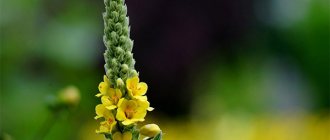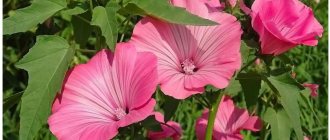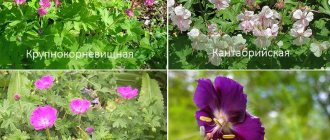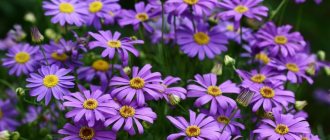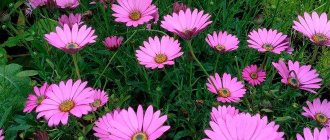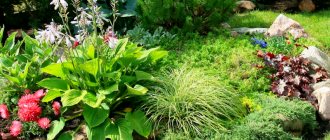One of the brightest in color, large in size garden flower, reaching a diameter of 20 cm, is the perennial oriental poppy. Its natural habitat is the Caucasus, Türkiye, Iran, Armenia. In the 18th century, the plant began to be cultivated in Europe, and they actively engaged in selection and developed more than a dozen luxurious varieties of various colors, with original texture and shape of the petals.
Flowering lasts an average of 2 weeks and occurs in May – June. The flowers, unfortunately, are short-lived, so they are almost never used in bouquets, and they live in a flowerbed for 2-3 days, but they look unusually festive.
Botanical description of the plant, main characteristics
The growing area of the oriental perennial poppy is the Caucasus, Türkiye and Iran.
The description is as follows:
- The bush is spreading, reaching a height of about 90 cm.
- The stem is a peduncle, erect, less often curved, covered with white fibers at the bottom.
- The root system is powerful, going deep into the ground.
- The leaves are lanceolate, oblong, the edges are pinnately dissected, the color is green, with white fluff.
- Opened buds are 10-20 cm in diameter, the number of petals is 4-6 pieces.
- Color - represented in all shades of red, pink and orange. Some varieties have a dark spot at the base of the flower.
- Stamens are purple or black, elongated.
- The fruits are small grains of brown color and oblong shape.
The flowering of garden perennial poppy lasts from the beginning of June until the second half of July.
Description of poppy
Members of the genus Poppy (Papaver) are herbaceous perennials, biennials and annuals with very powerful taproots, strong, straight single shoots, and amazing heavily haired carved greenery, famous for its filigree silver-blue texture. Alternately arranged, pinnately dissected, almost prickly to the touch due to the edge, the leaves can reach 30 cm in length.
The poppy blossom is a fascinating sight. Drooping buds, straightening peduncles as they bloom and spectacular large saucer flowers with the most beautiful stamens among garden plants are mesmerizing. The calyx of the flower consists of two large sepals, and the corolla is easily recognized by its delicate, almost transparent, tremulous four large petals surrounding a delightful “powdered” center of anthers and stamens, usually almost black in color.
Red, yellow, pink, orange, violet and even blue - decorative poppies boast amazingly beautiful shades that inspired legendary painters and today cause only admiration. After flowering, fruit boxes with beautiful discs at the top, filled with small rounded seeds of different shades of gray, are set.
Without exception, all poppies are propagated by seeds. And annuals - peony poppy, tangled poppy or changeable poppy are now classified as self-seeded poppy, glaucous poppy, bare-stemmed poppy or saffron poppy, peacock poppy; and more durable poppies - Alpine poppy, Amur poppy, Atlantic poppy, Burcera poppy, Lapland poppy, Miyabe poppy, polar or Scandinavian poppy, grayish or Tien Shan poppy, Tatra poppy - are best propagated by seeds. Some vegetative methods are also used only for perennial species. Growing poppies from seeds is very easy, as the plant often blooms within two months of germination.
Terry and peony poppy. © thompson-morgan
Types and varieties
Chinese poppy, as it is also called, includes more than 200 varieties that differ in different colors. In dachas and flower beds, flower growers most often cultivate the most popular varieties:
- Mrs Perry;
- May Queen;
- Indian chief;
- Perry's White.
Almost all varieties of oriental poppy are hybrid. Depending on the variety, the petals of the plant can be colored red, pink, purple, white, or lilac.
All oriental varieties are characterized by a large diameter of flowers
Problems and solution
| Problem | Cause |
| Why doesn't poppy bloom? |
|
| Brown coating on leaves. | Fungal disease due to excess moisture. |
| The leaves are turning yellow. | After flowering, this is a natural process. |
It should not be surprising that there are so few problems when growing poppies. This is truly a very unpretentious plant that can withstand drought and frost. Unless only our law enforcement officers can prevent you from growing an amazingly beautiful flower in your garden.
Features of planting and agricultural technology
Planting and caring for perennial poppies in open ground will not cause any particular difficulties for the gardener. The plant is quite unpretentious and frost-resistant.
The perennial oriental poppy prefers hills where water does not accumulate. The site must be protected from winds and drafts. Lighting is plentiful.
Landing
Step-by-step algorithm for planting poppy seeds:
- Planting time is spring, when the soil warms up by at least +5 °C.
- The seed material is slightly buried in the soil or simply scattered on top of it.
- The beds are covered with polyethylene to create a greenhouse.
- Watering is carried out as the top layer of soil dries.
- The time for the first shoots to appear is from 10 to 14 days. When seedlings appear, the film must be removed.
Given the unstable spring weather, seedlings must be covered with film when night frosts return.
Autumn sowing of poppy before winter is possible. It is held in November, when the temperature is no higher than +3 °C. At higher temperatures, there is a risk of premature germination of seedlings, which will die during the first cold snap.
Autumn planting is preferable as the grains undergo a natural stratification process. Autumn poppies begin to bloom earlier.
Hardening makes plants more resilient
Poppy bushes grow straggling; this must be taken into account when planting, keeping the distance between grains at least 50 cm. Otherwise, the seedlings will have to be thinned out.
Preparatory work before planting
Before planting, it is necessary to carry out a number of preparatory work:
- The selected area is cleared of weeds and dug up with the addition of humus, compost or other organic matter.
- If planting will be carried out in the spring, it is recommended to stratify the seed material by placing it in the refrigerator for 1 - 1.5 months.
An additional measure is to treat the seeds with a growth stimulant and soak them for 20 minutes in a solution of potassium permanganate for disinfection.
Poppy does not tolerate transplants well. It can grow in one place for 5 to 7 years without losing the vigor of its flowering, so the choice of location must be taken seriously.
If the plant is planned to be planted in a lowland, drainage must be organized to prevent water stagnation.
Disease and pest control
Diseases that pose a danger to poppy include: powdery mildew (including downy mildew), root rot, and black spot on leaves. Spraying with copper oxychloride (40 g of the drug is required to prepare 10 liters of solution) or Bordeaux mixture helps against these misfortunes. You can use fungicides - “Maxim” or “Topaz”.
The preparations Actellik and Aktara are effective against pests (aphids, secretive proboscis, thrips).
Attention. The affected leaves of a sick poppy must be cut off and burned to prevent the spread of infection, and the recovering plant should be “supported” with potassium fertilizer.
Oriental flower care
If we talk about this decorative, perennial poppy, planting and caring for it will not be difficult. It will delight you with abundant and long-lasting flowering, provided that simple agrotechnical measures are followed.
When caring for poppy seeds, do not forget about applying fertilizers. Although the bush can develop and bloom normally without fertilizing, it is recommended to apply mineral supplements at intervals of 2-4 weeks throughout the season.
The plant responds to fertilizers by forming lush foliage and longer flowering.
The main aspects of care are watering, fertilizing, timely replanting
Watering
Soil moisture should be regular but moderate. The plant does not like excessive moisture.
It is necessary to focus on the condition of the soil - watering is carried out as its top layer dries out.
Temperature
Oriental poppy is a heat-loving plant, but it is not afraid of winter frosts down to -35 ° C, which it can tolerate even without additional insulation.
Sheltering bushes in extreme cold is necessary if the winter season turns out to be snowless.
Mulch can be used as insulation
Garter bushes
Oriental poppy bushes are quite tall; they can break off under the influence of winds or under the weight of large buds.
Wooden pegs are used as support, which are placed near the bushes. The plant is tied to the supports with a rope.
Transfer
Poppy transplantation is carried out every 5-7 years. The plant must be carefully dug up without damaging the deep root system and without destroying the earthen ball around it. Together with a lump of old soil, the bush is transferred to a new place.
The time for transplantation is autumn, when the poppy has faded.
Propagation options for perennial poppy
You can propagate poppies:
- cuttings;
- dividing bushes;
- sowing seeds.
The easiest way to grow poppies is from seeds.
Sowing is done either with the onset of spring, or before the onset of frost in the fall. Stronger plants can be obtained if the seeds undergo stratification. For autumn sowing, days are chosen at the end of November, when the temperature does not rise above + 3 +4 degrees C. At higher temperatures, the seeds can sprout, but with the onset of frost, they can die.
Spring sowing is carried out immediately after the snow melts.
They begin work by preparing the soil, clear it of the remains of old roots and pebbles, carefully loosen it, apply mineral and organic fertilizers, humus and compost are suitable.
The grooves for sowing are made shallow, maximum 2 cm deep, otherwise the seedlings may not break through to the surface through the thickness of the soil.
To speed up the germination process, you can cover the crops with plastic wrap. Shoots may appear in 2 weeks; throughout this period it will be necessary to maintain the level of humidity in the garden bed.
To protect the emerging seedlings, you can build a light shelter; film or spunbond will protect the tender seedlings from frost, sun and wind.
To prevent the plants from being too crowded, the seeds can be spread at a distance of 3-5 cm from each other when sowing. If the seedlings are too dense, they are thinned out after the third leaf appears.
Poppies grown from seeds usually bloom in their second or third year.
Vegetative propagation methods require quite careful care; poppy takes root in a new place quite difficult. Flowering is usually observed the next year after planting.
Three to five year old bushes are chosen for division. In this case, it is not recommended to completely dig up the bush; you only need to separate a fragment of the root from the side. Division can be done in early spring, before the buds appear, or in the fall, after flowering has ended. Care should be taken to preserve the fragile root system as much as possible.
The method of dividing the bush is advantageous in that the result is plants that are absolutely identical to the mother plant, preserving all the characteristics of the variety.
When propagating by lateral shoots, it is recommended to keep the cuttings before planting for 24 hours in a solution of root or any other root formation stimulant.
For planting, loose soil is prepared, moistened, the planted cuttings are covered with transparent caps, you can use plastic bottles of mineral water. After roots form, the plants are transplanted to a permanent location.
Reproduction methods
Poppy is propagated by cuttings, seeds and division.
You can collect the seeds yourself when the seed pods are ripe and plant them immediately in open ground, or prepare seedlings in greenhouse conditions.
But since poppy does not tolerate transplantation well, the seedling method is practically not used.
Division method:
- Bushes that are at least 3 years old are suitable for division. The time for the procedure is spring, before the buds begin to form, or autumn, after the plant has flowered.
- Part of the root system is separated from the side of the mother bush.
- The delenka is carefully examined, damaged or diseased roots are removed.
- The rhizome is planted in the prepared hole.
The first flowering after propagation by division occurs in the next season.
Cuttings:
- shoots at least 10 cm long are cut from the mother bush;
- the cuttings are soaked in a growth stimulator for a day;
- planting is carried out in nutritious, loose soil, pre-moistened.
The top of the cutting must be covered with film or a plastic bottle.
As soon as the cutting takes root, which will be evident from its increased growth, it can be replanted to a permanent place.
When to sow oriental poppy?
If annual poppy varieties begin to bloom in the year of planting, then perennial poppy varieties will most likely bloom the next season (if the seeds are sown in the fall). When planting in spring, flowers will appear on the bushes later than those planted in autumn. Poppies bloom at the beginning of summer.
The fruit of this plant is a box covered with a “lid” on top. When it dries, small holes appear between it and the lid. If you leave a box with seeds on the bush, as a result of self-seeding, the seeds will spill out through these holes. And this cycle will repeat annually.
Appearance of the plant
Oriental poppy (small-leaved) is a species of herbaceous perennial from the Poppy family. The plant has powerful straight stems up to 1 meter high and green leaves up to 30 cm long with a large number of segments. At the beginning of summer, large flowers open on thick stalks - simple, double or semi-double. The classic color is fiery red with a black spot at the base. Poppies come in peach, raspberry, cream, pink, salmon, white and purple colors, and some varieties have spots at the base of the petals or a border. The diameter of the flower can reach 20cm. The flowering period of the plant is about a month; one opened bud lives on average about three days. Possible re-blooming in autumn. In the second half of summer, a fruit-box about 3 cm long, filled with small seeds, is formed.
22
Poppy has been cultivated for thousands of years in many regions of the globe, and it is used not only for garden decoration.
- Many peoples associate the concepts of sleep and death with this plant; it is used in religious rituals.
- Red poppies are a symbol of soldiers killed in battle.
- Poppy is used in medicine to make painkillers and sleeping pills.
- Poppy seeds are a delicious food product that is often used in cooking. It is added to the dough and sprinkled with small poppy seeds on the baked goods.
- Dried flower shoots with boxes are used to make dry flower arrangements.
And, of course, poppy is a plant popular in decorative floriculture. A large number of varieties have been developed that differ in size, color and appearance of flowers, resistance to unfavorable growing conditions and diseases. After flowering, the plant loses its decorative effect and begins to dry out. It is pruned, and in the area with poppies you can grow autumn-blooming annuals, such as aster. It is also convenient to combine poppy with late-flowering perennials - chrysanthemums or daylilies. Different periods of flowering of plants will allow the flower garden to maintain an attractive appearance for a long time.
Different varieties of flowers cross-pollinate with each other. Oriental perennial poppy is grown separately from other species for seed propagation. This will preserve the species properties: color, texture of petals and other characteristics of the plant.
Perennial poppy rhizome
The medicinal properties of poppy, its benefits and harms
Since ancient times, red poppy has been considered a plant that can cure insomnia. They said that if you fall asleep in a poppy field, you may not wake up at all.
Samosae poppy was used as a medicinal plant back in Ancient Egypt. Currently, this particular species is not used in traditional medicine, but there are many folk remedies based on this plant. It is used to treat coughs, nervous disorders, and insomnia. Milk decoctions help reduce attacks of diarrhea; they are given for bladder diseases and some viral infections.
Soporific poppy, or opium poppy, is grown to produce potent narcotic substances, which are used in pharmacology to produce many medications.
With their help:
- relieve spasms and cramps;
- relieve pain;
- improve sleep;
- reduce blood pressure;
- treat diseases of the digestive and respiratory systems.
Opium-based drugs must be taken in strict dosage and only with a doctor's prescription. Many of them can lead to addiction, resulting in the development of drug addiction, psychological breakdowns and even irreversible reactions in the body.
Poppy seeds are used for culinary purposes, sprinkled on baked goods or used as a filling.
How to care for poppy
The poppy will sprout 1-2 weeks after sowing. Then you need to thin out - leaving only the largest bushes. Each of them should “belong” to about 20 cm of area - this will help the plants develop well, because the bushes will be able to receive nutrients from the soil in the right quantities.
Poppy begins to bloom no earlier than 3 months after sowing. Usually this period falls in June and lasts from a month to a month and a half. At this time, the poppy may need additional watering, because moisture will help the flowers be healthier and stay on the bushes longer. The rest of the time, the poppy does not even need watering - it is so unpretentious. True, there is still an exception: during periods of drought, these plants need additional irrigation.
For a more beautiful and high-quality poppy bed, it is worth weeding from time to time - removing weeds that prevent the poppy from growing and spoil the appearance of the planting. After weeding, you can loosen the soil between the bushes, preventing an earthen crust from forming. In addition, the soil between the poppy bushes can be covered with mulch (sawdust, dry leaves, dry apricot kernels), and then there will be no need to weed and loosen the soil at all.

